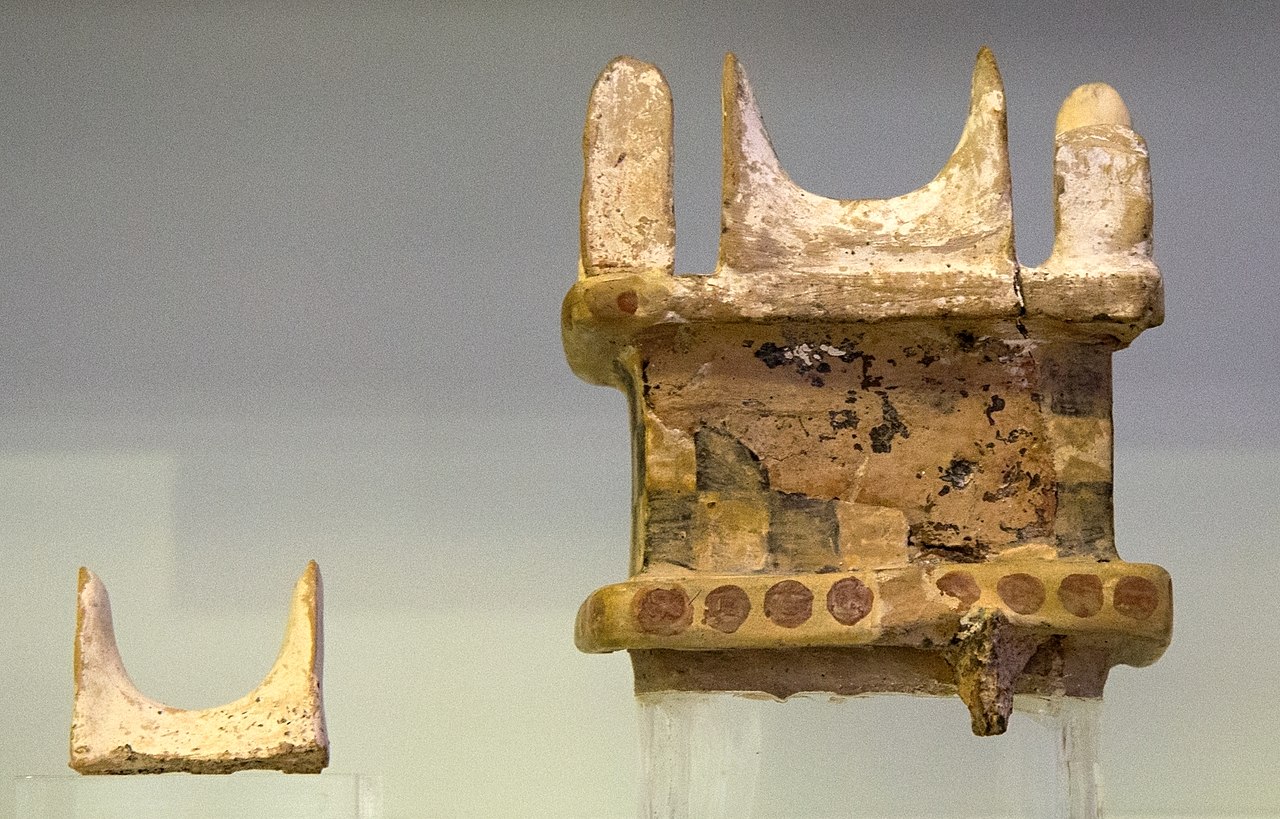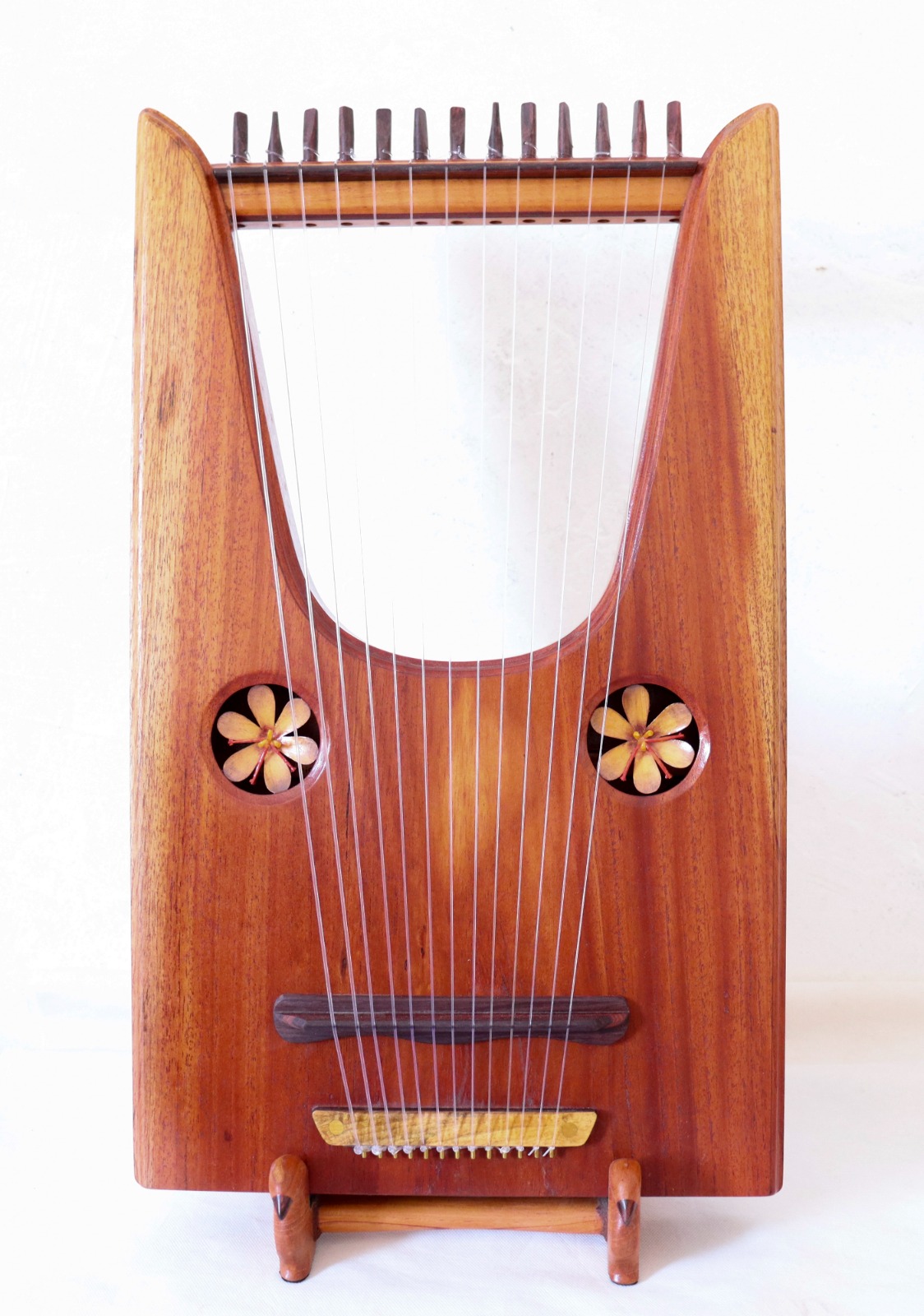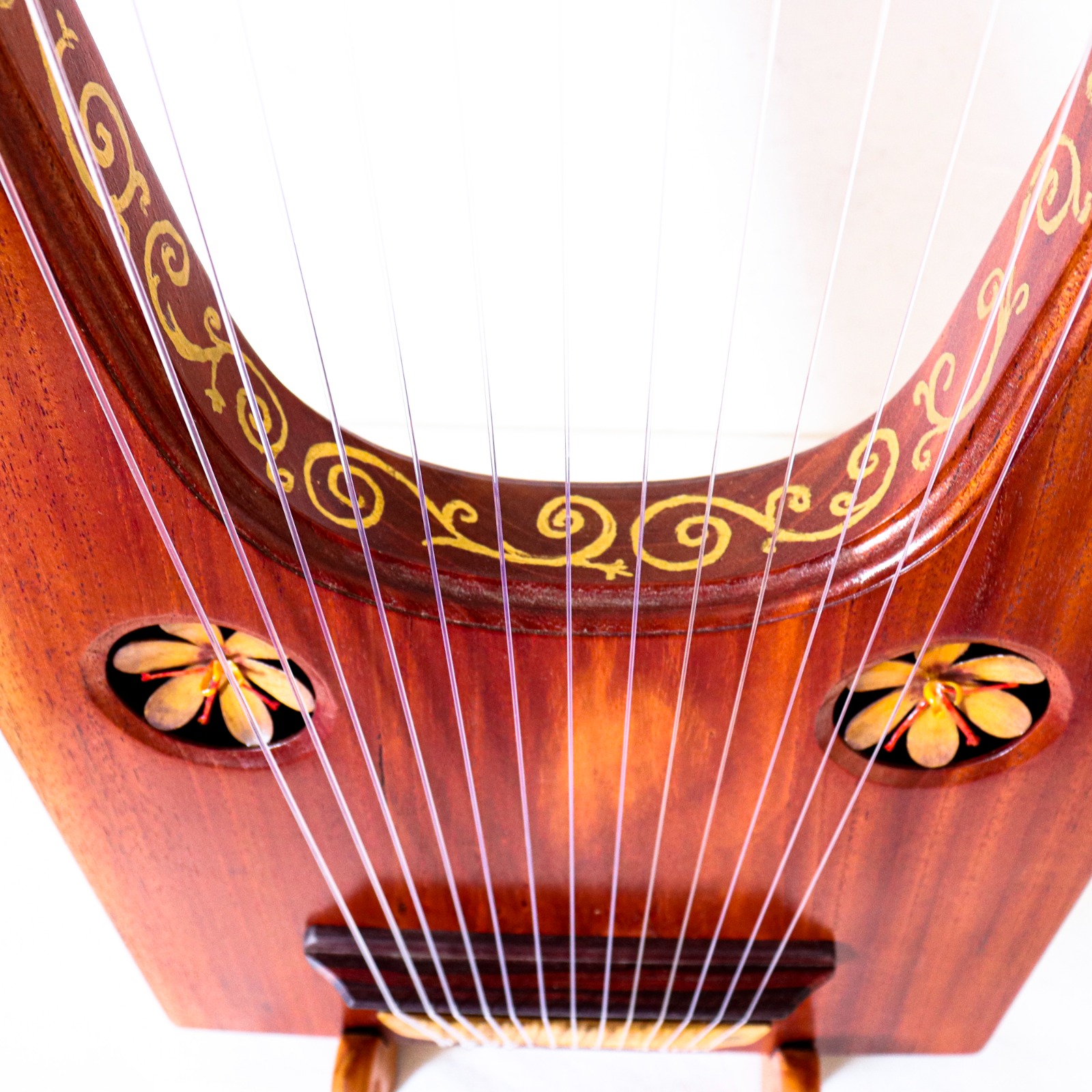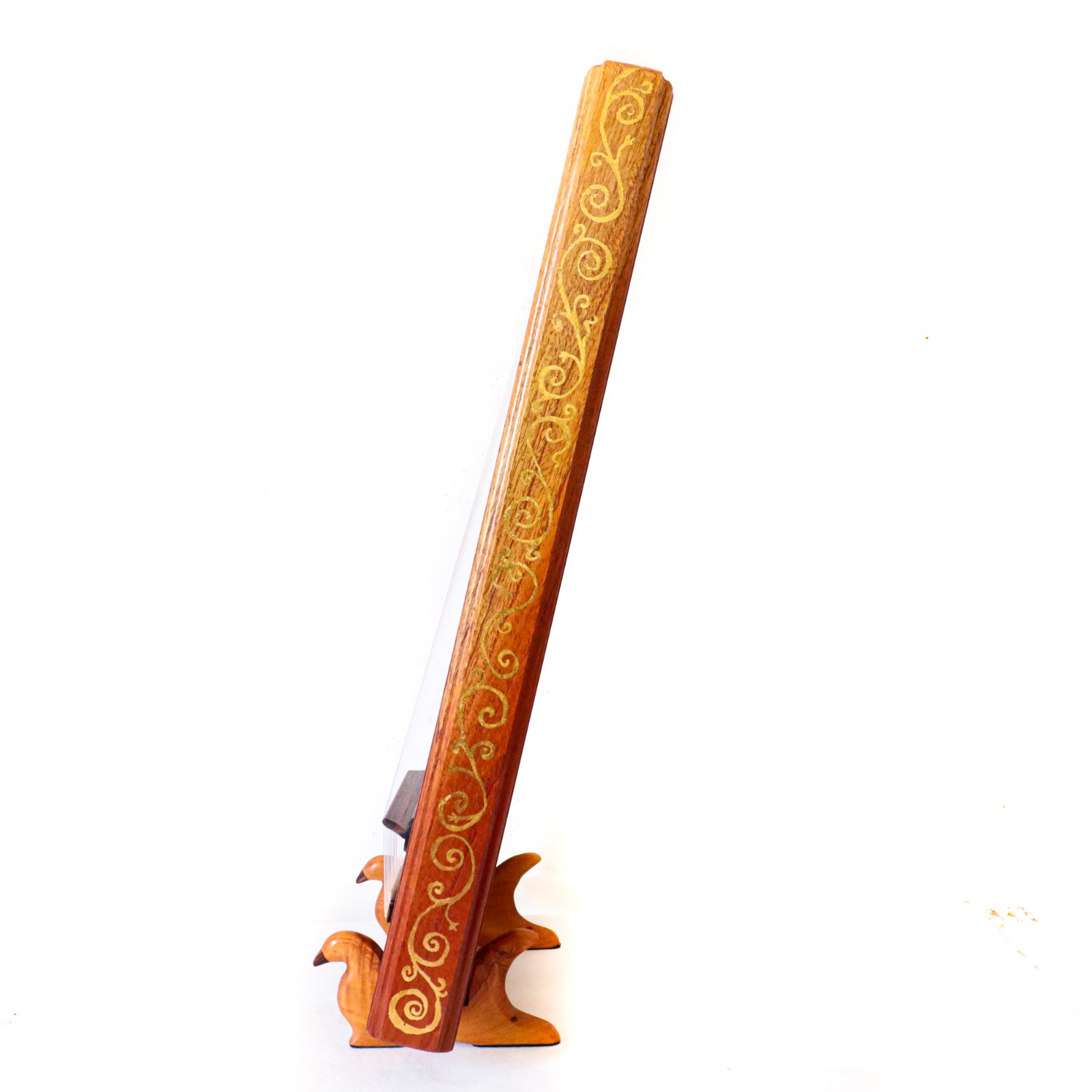Ah, yes. I've been aware of those Mesopotamian lyres for a good while now. I think I want to geek out about them, if you'll permit :)
There's a lot more engineering in them than meets the eye, some of which Peter Pringle talked about here and there. The first attempts at recreating those lyres — including trying to get something like the sound said to come out of them — ended quite catastrophically. If memory serves me, there was a lot of debate over how those "pegs" at the top could be used to tune them (which I know for a fact is a solved problem nowadays) but mainly getting the tuning right seemed impossible.
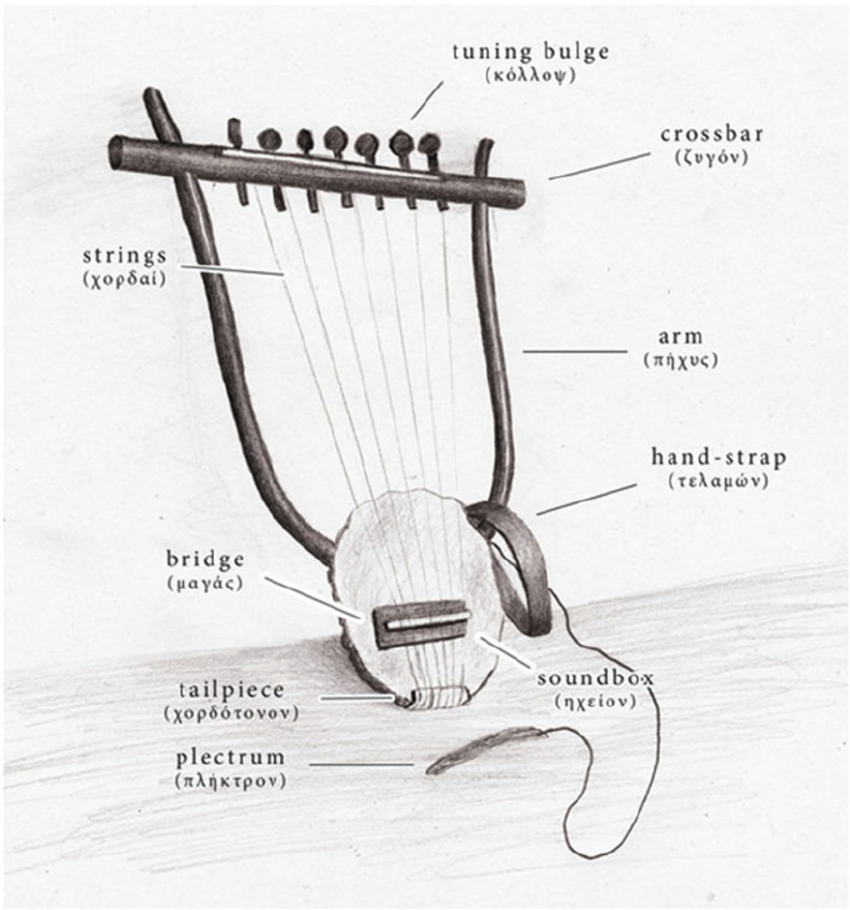
The issue was that the tension on the strings was so high that the crossbar would bend down with each string that was tuned, which in turn made all the previous ones out of tune. Wood alone just couldn't take it! I think the video you posted was recorded back when Pringle was still commenting about this issue, which I believe he later solved as you can see in this beast of a performance below.
I can't quite pull a quote here, but I believe he ended adding a metal bar inside the crossbar to be able to bear the load... And this refinement might have been there in the original specimens of this instrument, I was told. It's really incredible, isn't it? The instrument itself does sound like a cow, and in the video description Peter Pringle explains a lot about his rationale in the recreation.
Now, another very interesting lyre comes from Crete itself, from the Hagia Triada sarcophagus, which I had the pleasure of seeing for myself.
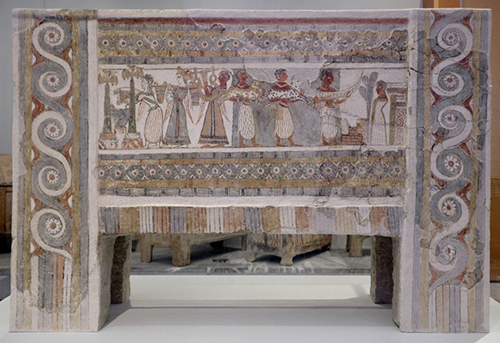
It's also visible in this pottery from around 1200BC:
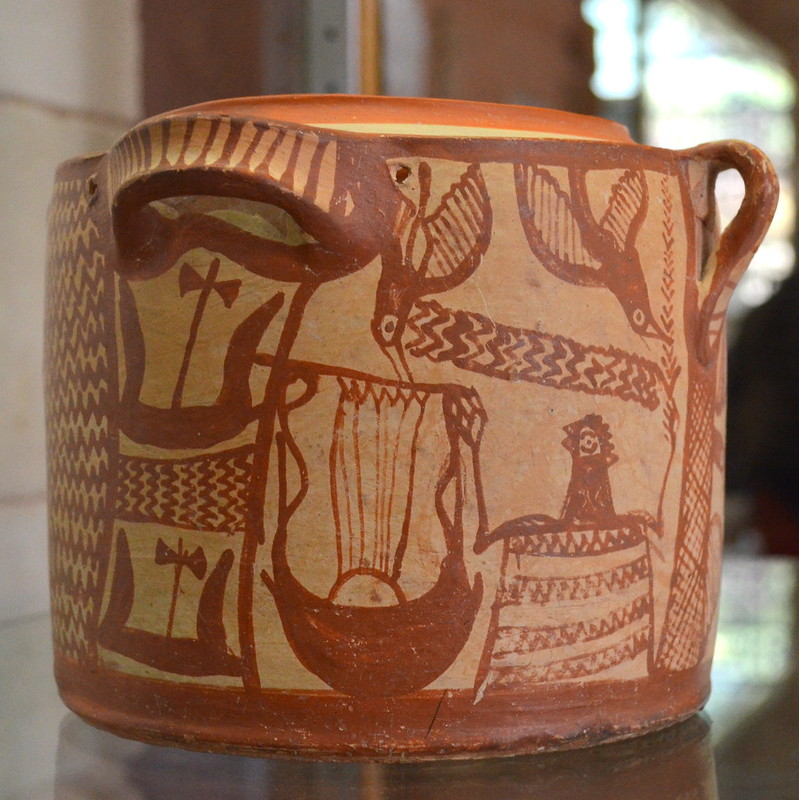
It's also been recreated by Luthieros, though it naturally comes with a number of creative liberties.
I bring all of this up for a reason, though. Crete was quite the maritime and economical powerhouse back in its time. There are Cretan artifacts spread all over the Mediterranean and North of Africa, and there's been a very healthy cultural mixing between Crete and Egypt. Scarab jewels were found in Crete, and it seems like there was a lot of artists coming back and forth learning techniques in foreign lands.Mind you, both the Mesopotamian and the Hagia Triada lyres far precede Ancient Greece as we know it! The myth of Hermes tells of his mother, Maia, giving birth to him and his little adventures shortly after, wherein he killed a turtle and some of Apollo's cattle, then used the shell, horns, leather and guts to fashion a lyre. If we think of this as belonging to "Ancient Greece" as a historical period, then look how advanced the Cretans and Mesopotamians that preceded them were! And that's being generous to the Cretans, because I wouldn't be surprised if the Hagia Triada lyre actually originated from Egypt. And Mesopotamia was not too distance from Crete either — don't quote me on this, but I think I saw on the Heraklion Museum some stuff about Cretan artifacts being found in Mesopotamian ruins.
Mind you, nowadays I play the lyre and I've become very immersed on its research and recreation. My interpretation, or perhaps I should call it my hypothesis, is that lyres must have been a very developed and refined category of musical instruments back in 1400BC. The ancients were no less criterious with their songs than we are today, they must have been inventive and ingenuous. I believe the most traditional turtle shell lyres (called chelys lyres) must have been extremely ancient, and by the Neopalatial Period (between 1750 and 1490BC) there must have been a wide variety of them. The consensus among historians and players is that, for example, the kithara (another kind of lyre, which you can see below) seems to have been exclusive to professional players, while the more average people used simpler versions of the instrument.
Now, I'm very eager to talk about all of this because recently I've been doing a lot thinking on this subject. Asterion's lyre will pop up a lot on Chapter 20 and I plan on giving it a new look. Back when the game started we didn't know much about lyres ourselves, so we went with a pretty standard design but now that I've been playing it for a while I have a better feel for what kind of lyre Asterion would want and how it would be preserved across the centuries.It's probably a bit dorky of me, but I want Asterion's lyre to be reproducible in real life because I've been approached by a handful of people who want to learn it because of Minotaur Hotel. In short, I'd love it to be a design and a sound that Asterion would be satisfied with, and I want it to have the standard of quality I've demanded out of my own lyre. Though I will say that I've realized that Asterion would not want a truly traditional Greek (chelys) lyre because they really are a bit too limiting. Someone like him, with all the time he's had, would want something more, which we will probably see soon. We haven't settled on a design, but for sure it will be one that is possible, good and affordable*
But I should probably confess that I'm not the most traditional of players myself! My lyre is almost 1 meter tall too, which almost every person on Earth would say is too much but I love this beast.
*Affordable in comparison to the usual price good lyres go for, which are easily above the 600-700USD range for even basic ones with only 7 strings, which I consider overpriced (my big beast of a lyre came out cheaper than that, it's better and has 13 strings, so I think I'm in a position to say this).
Anyway, I hope I've given you some food for thought, Sirius. As you can see I have a lot of opinions about lyres.




